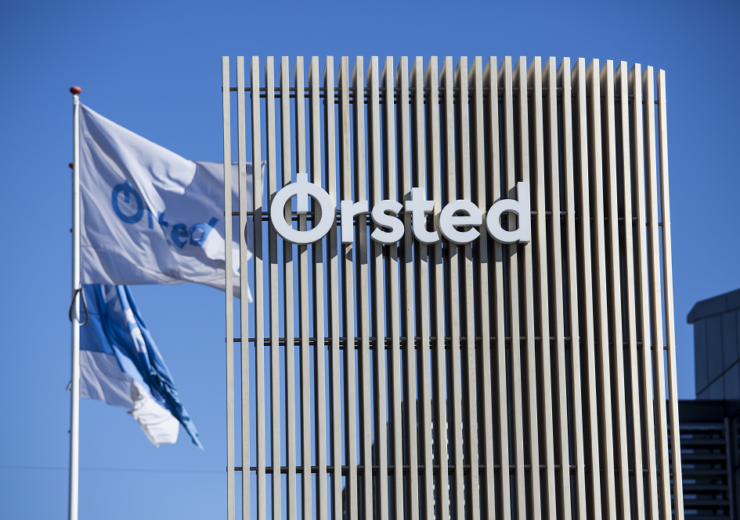The Danish wind-power specialist said earnings had been impacted by low demand across Europe, but maintained its full-year guidance

Orsted is the world's largest operator of offshore wind farms (Credit: Orsted)
Danish wind giant Orsted reported an 18% drop in second-quarter earnings today (12 August), largely due to lower electricity demand across Europe amid coronavirus lockdown measures.
Earnings before interest, tax, depreciation and amortisation (EBITDA) for the three months stood at 2.96bn Danish krone ($468m), compared to DKK3.63bn ($574m) in the same period of 2019.
The energy firm said the demand-related impact of Covid-19 on its quarterly earnings totalled around DKK150m ($23.7m), but would not cause it to change its full-year guidance.
A net loss of DKK809m ($128m) was reported for the quarter, compared to a profit of DKK1.1bn ($174m) a year earlier.
“We have seen negative Covid-19 related effects on European power markets, especially in the UK, driven by lower demand for electricity,” said Orsted president and CEO Henrik Poulsen, adding that the company had maintained “stable operations and strong earnings” during 2020.
“Our asset base has continued to be fully operational and we have maintained normal availability rates on our offshore and onshore wind farms.”
Orsted, which is the world’s largest operator of offshore wind farms, has kept its full-year earnings expectations set at between DKK16bn ($2.5bn) and DKK17bn ($2.7bn), although gross investments over the year will be lowered by DKK2bn ($316m) “due to changed timing of payments”.
Orsted earnings up 11% over first six months of 2020
The second quarter of 2020 has proved challenging for energy companies, as global lockdowns to limit the spread of coronavirus significantly reduced demand for electricity and transport fuels.
In April, the International Energy Agency (IEA) warned 2020 is likely to register the biggest global decline in energy demand since the Second World War, down by 6% by the end of the year.
Poulson said: “Our business model and organisation have proven very resilient, and we remain confident about the company’s ability to deliver on both its short-term and long-term performance targets. We continue to see strong political and public support for an accelerated transition to green energy.”
Orsted performed strongly in the first quarter of the year, posting a 33% increase to operating profits on the back of high wind speeds during the period.
Over the first six months of 2020, EBITDA grew by 11% to DKK9.8bn ($1.5bn), with a ramp up in power generation from its assets at the Hornsea 1, Lockett and Sage Draw wind farms driving a 17% increase in earnings from its onshore and offshore wind operations, which totalled DKK8.2bn ($1.3bn).
The company reported a first-half net profit of DKK2.5bn ($395m), which was 32% lower than in the same period of 2019.
Poulson added that shipyard closures in Singapore have disrupted the construction of substations for its Hornsea 2 and Greater Changhua offshore wind projects.
“Although we still expect to be able to complete both projects within our budget and time schedule, we see increased risk of delays; especially at Hornsea 2,” he said.
“We expect any delays to have a limited overall impact on project economics.”
